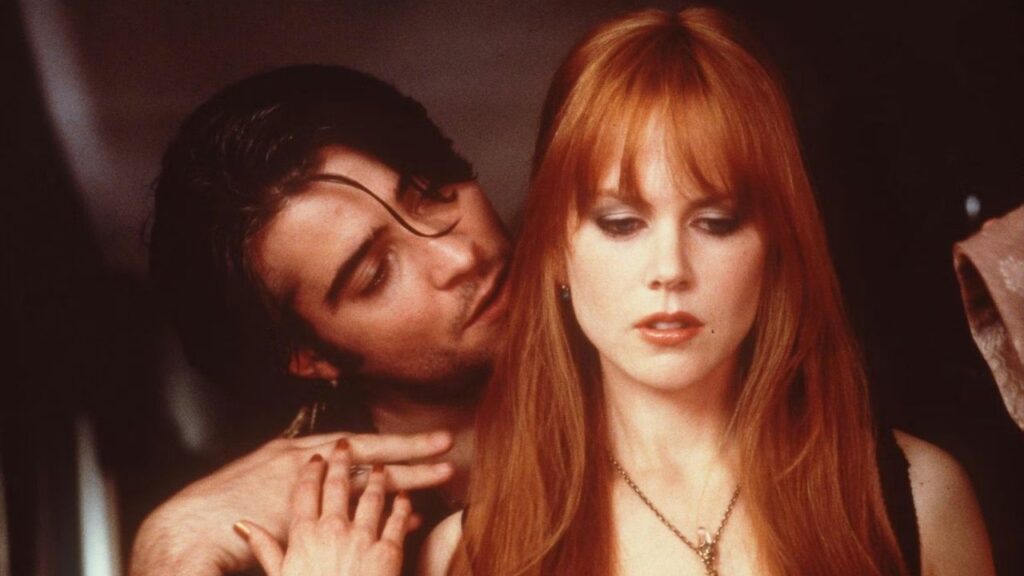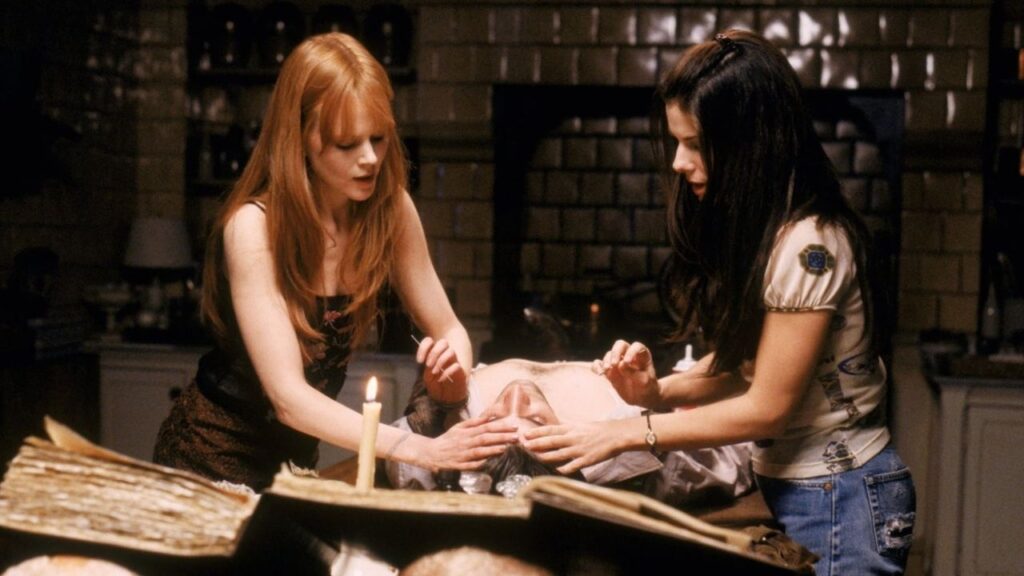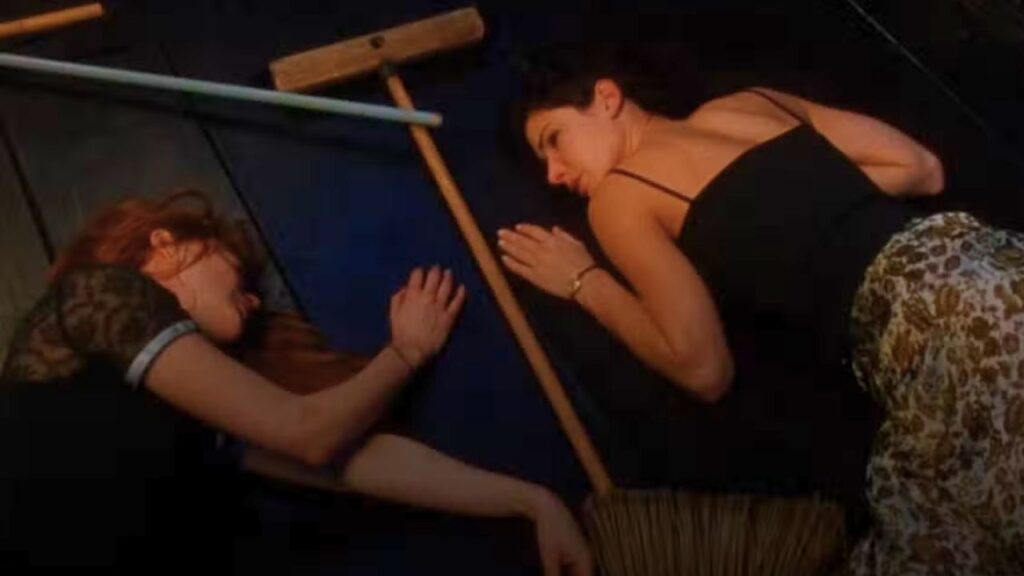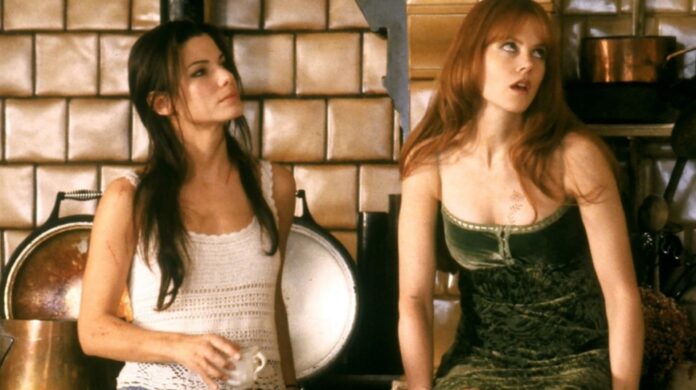The story of ‘Practical Magic‘ begins with two sisters, Sally and Gillian Owens, who come from a long line of witches cursed to lose the men they love. Their lives seem ordinary until tragedy strikes, and the quiet town they live in begins to whisper. But what the sisters don’t realize is that their family’s story is tied to something much darker. It’s just a simple spell, a piece of real history that once cost innocent lives.
The Owens Family’s Curse From ‘Practical Magic’ Explained

The movie opens with a haunting glimpse into the past, showing how the Owens bloodline began with Maria Owens, a woman condemned for witchcraft. Her story sets the stage for the curse that shadows her descendants. The scene, filled with Puritan settlers in period-accurate clothes, mirrors the grim reality of the Salem witch trials.
Related: 15 Spooky TV Shows For The Halloween Season
Though the film takes place in Massachusetts, it was actually shot on Whidbey Island, Washington. The choice wasn’t random; Whidbey’s Victorian homes closely resemble the preserved architecture found in Massachusetts towns. While the state is known for its Colonial-era buildings rather than Victorian ones, the resemblance gives the film its old-world feel.
Between 1692 and 1693, real women in Salem were hanged after being accused of witchcraft. Maria’s fictional persecution echoes their fate. According to the Salem Witch Museum, those convicted weren’t exiled to distant islands but imprisoned in Boston’s Gaol, where many died due to horrific conditions. The trials mostly targeted women, though five men also faced execution.
A Real History Of Fear And Blame

The witch hunts that inspired Maria Owens’ story began long before Salem. During the Middle Ages in Europe, the Catholic Church’s warnings against sorcery turned into mass persecution. Cambridge University records show that from 1300 to 1800, thousands of women were drowned, burned, or tortured in the name of religion.
In case you missed it: 25 Must-Watch Gothic Horror Movies Of All Time
According to Trinity College, these accusations often stemmed from the biblical tale of Eve. She was blamed for bringing sin into the world. And the belief that women were naturally weaker and easier to corrupt. The UK National Archives confirms that these teachings fueled centuries of violence against women accused of witchcraft.
When these ideas reached Puritan New England, they collided with strict religious laws and community rivalries. The Puritans wanted to “purify” the Church of England by enforcing biblical rule. The suspicion of witchcraft became an easy way to settle disputes, especially against outspoken or land-owning women.
How It All Started

It all started when twelve-year-old Ann Putnam and a group of other girls accused neighbors of cursing them. They suffered a series of nightmares and mysterious illnesses. Their first target was an enslaved woman named Tituba. Smithsonian historians say that her forced confession sparked chaos across the colony.
Related: 25 Best Fantasy TV Shows, Ranked
Even men became victims. One, Samuel Wardwell from Andover, was executed for predicting the sex of unborn babies, seen as an act of witchcraft. The Salem Witch Museum confirms that the youngest person executed was in her late thirties. It was not a teenage girl as often shown in popular stories like The Crucible.
Generations later, the Owens sisters face their own version of a witch hunt. After losing their parents to the family curse, Sally and Gillian are raised by their aunts, Frances and Jet. The aunts use their magic to help other women in town. But the Owens name remains a target for gossip and ridicule. Practical Magic turns one of history’s darkest moments into a story of strength and healing.





